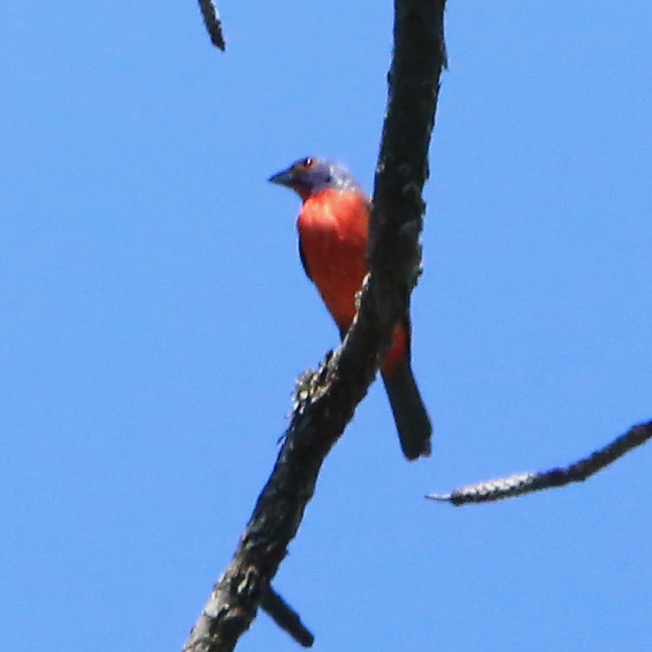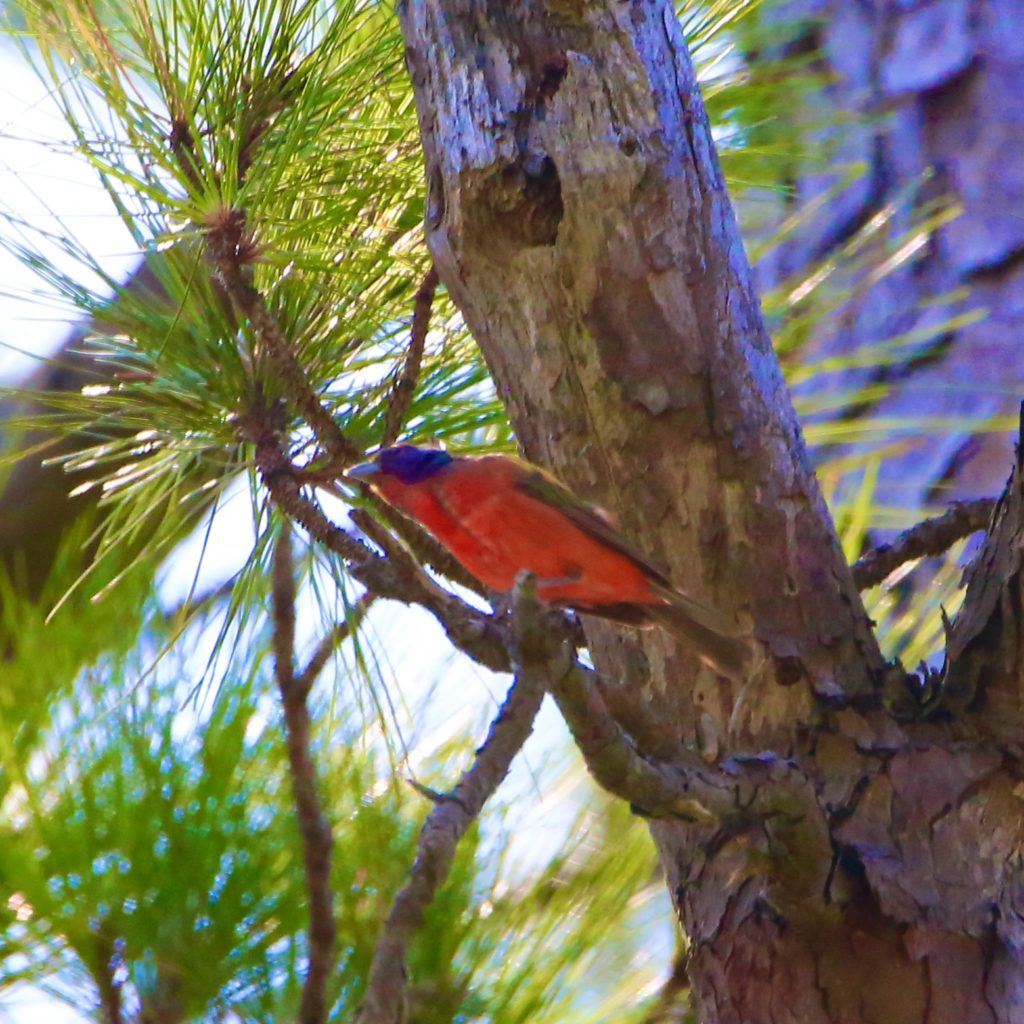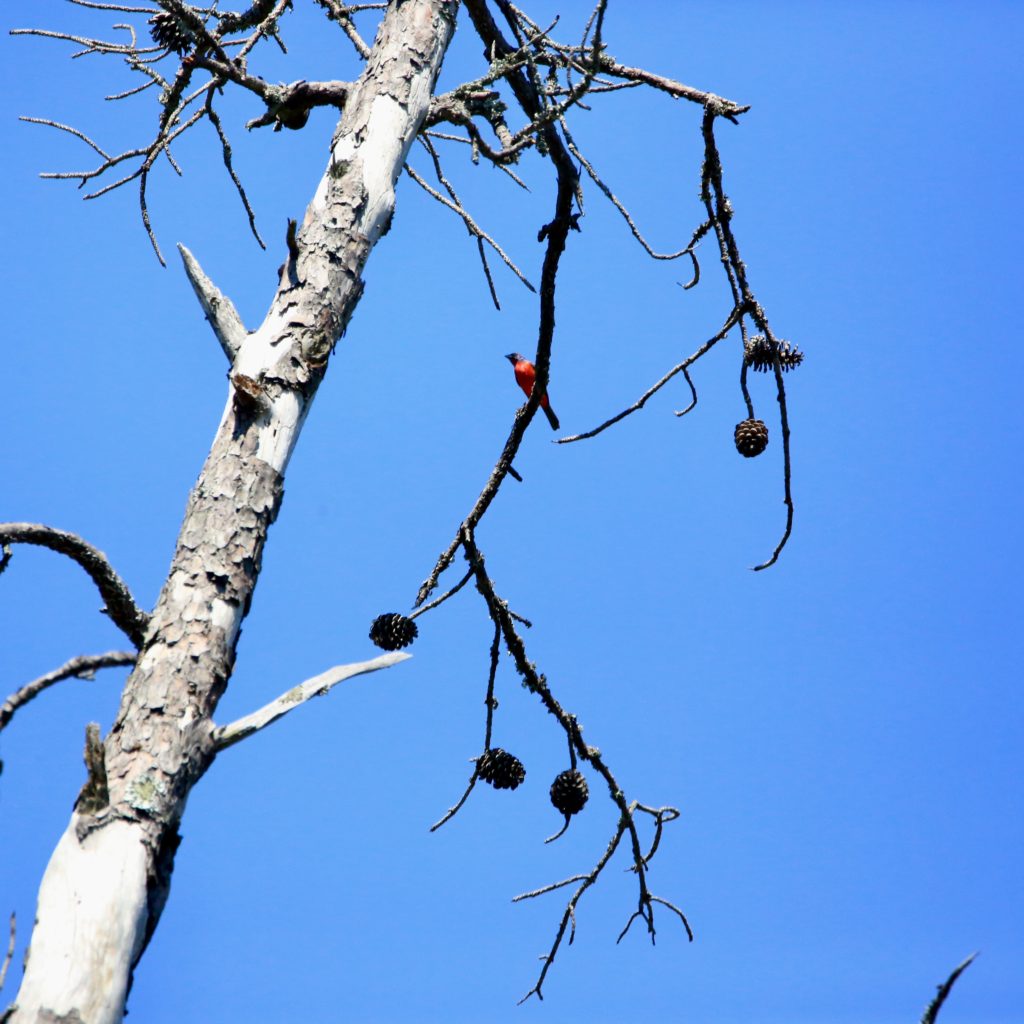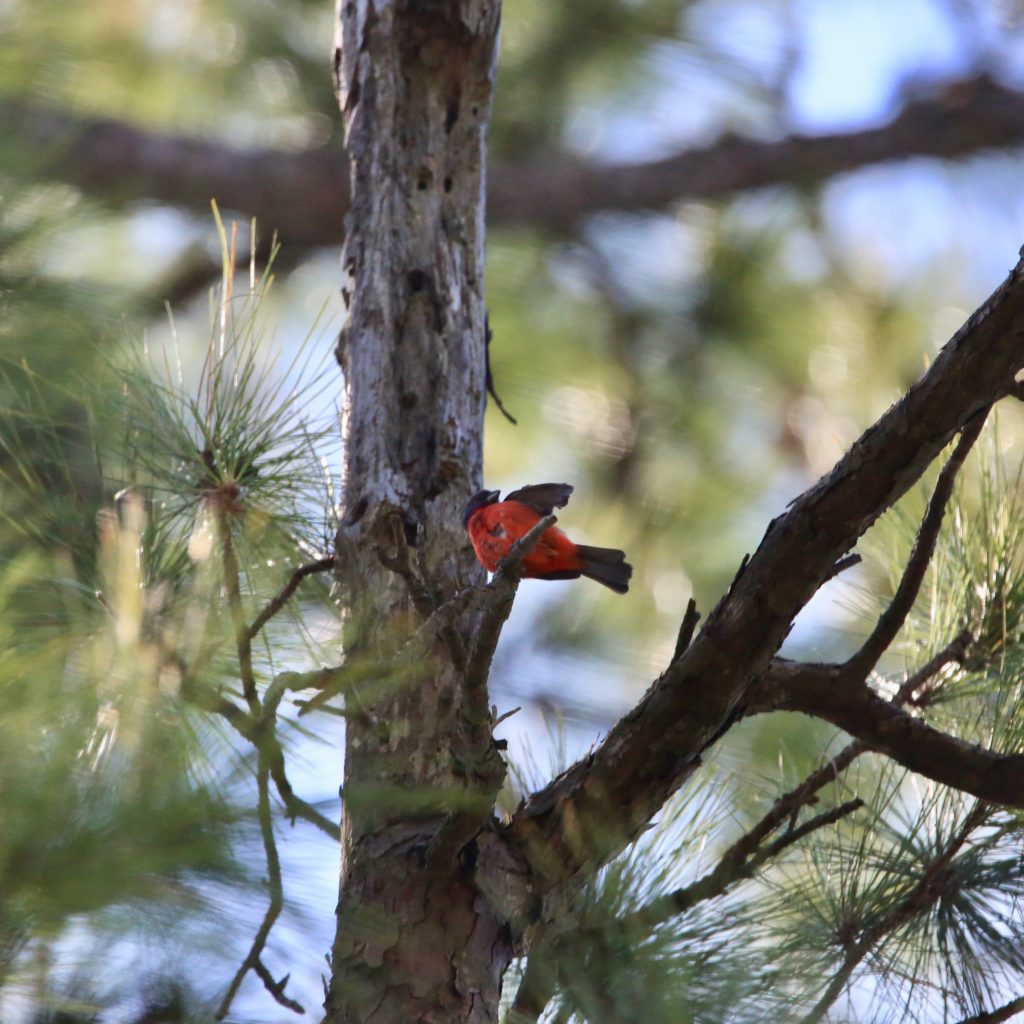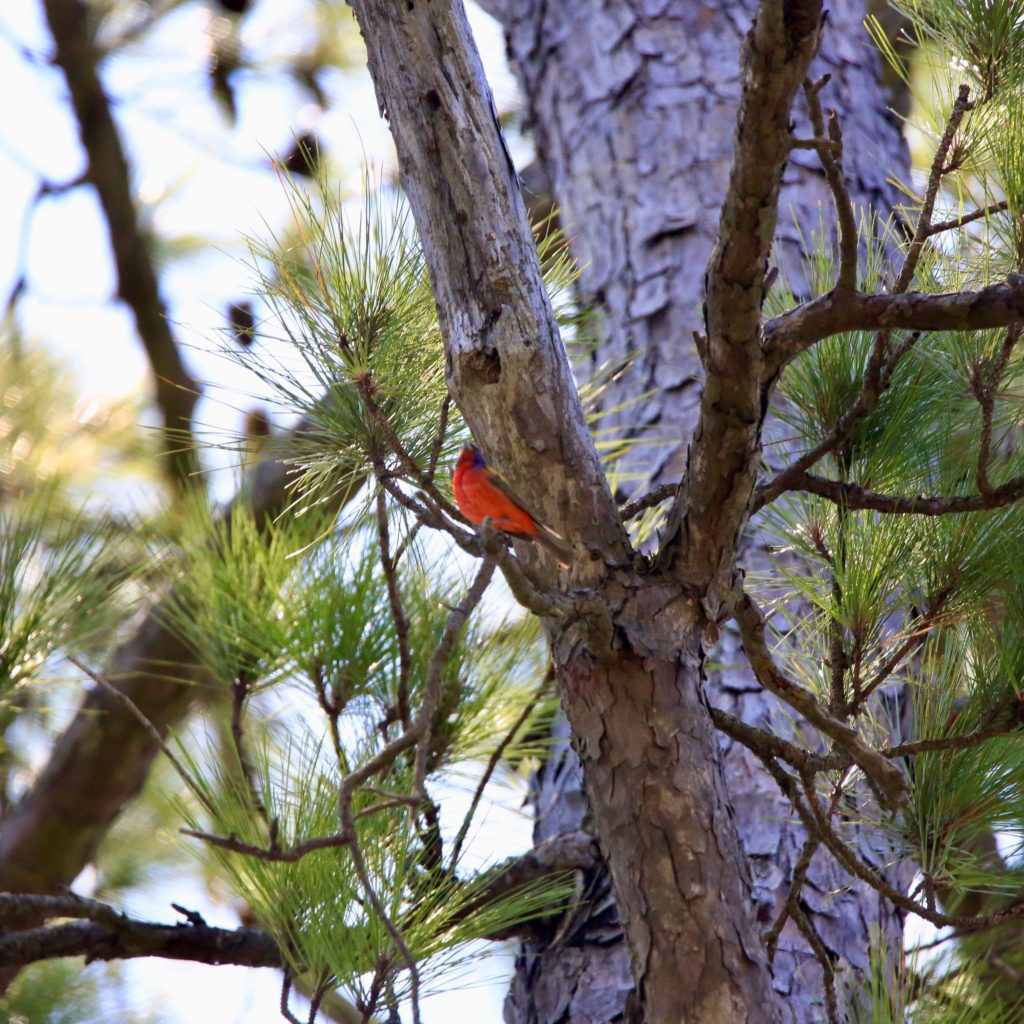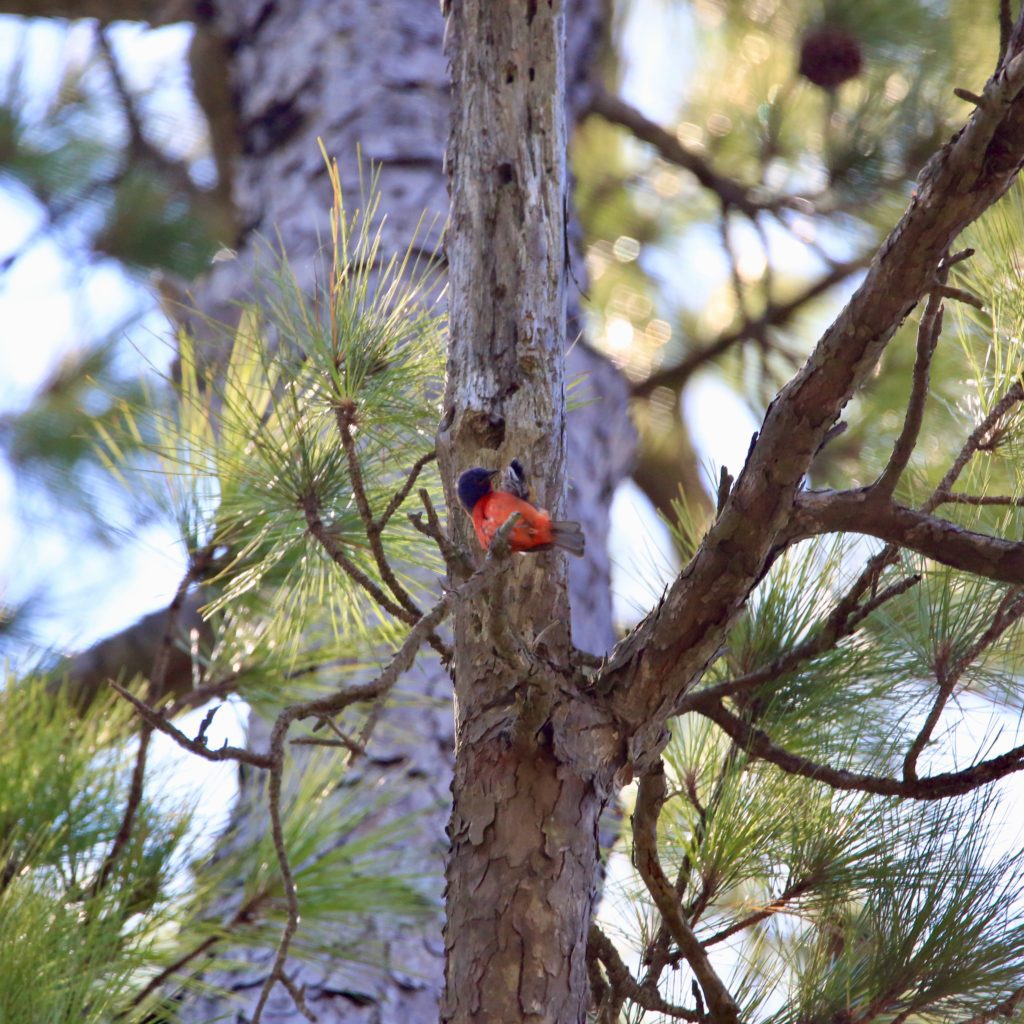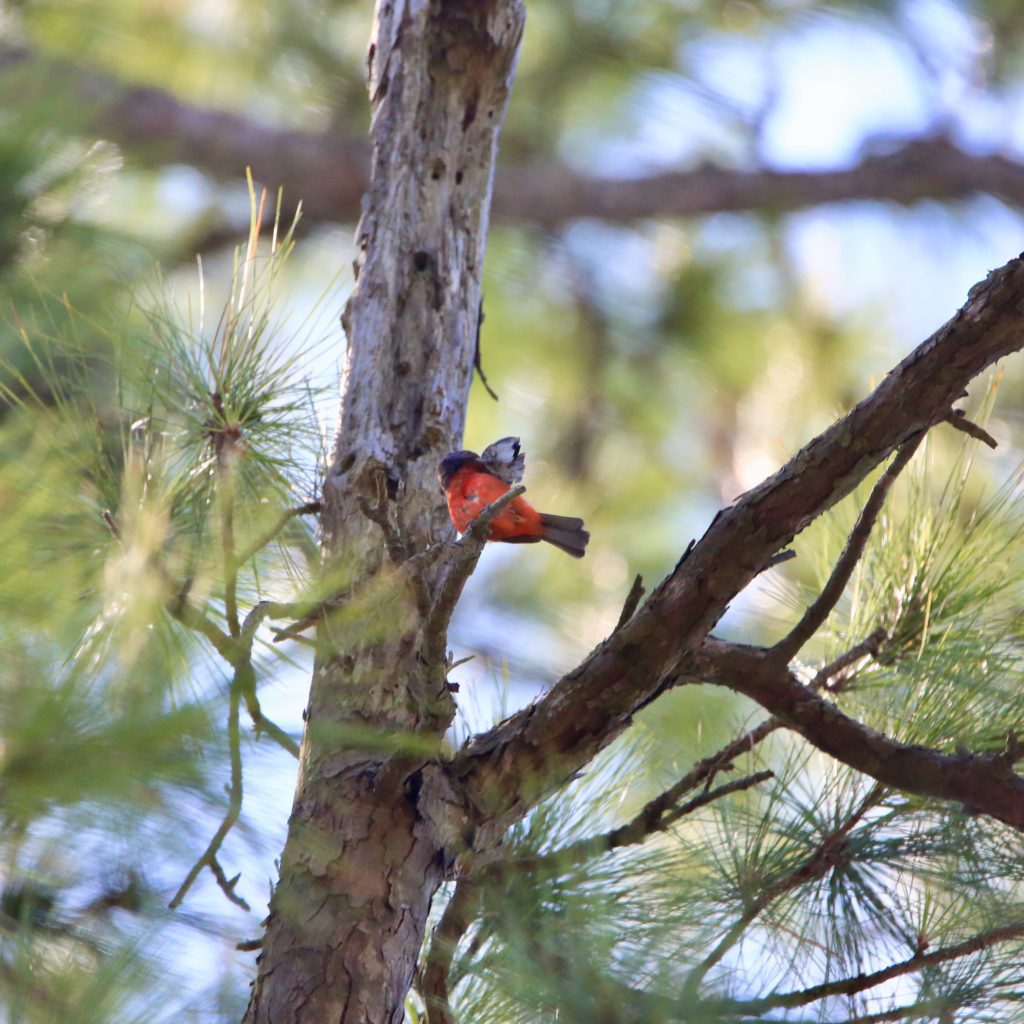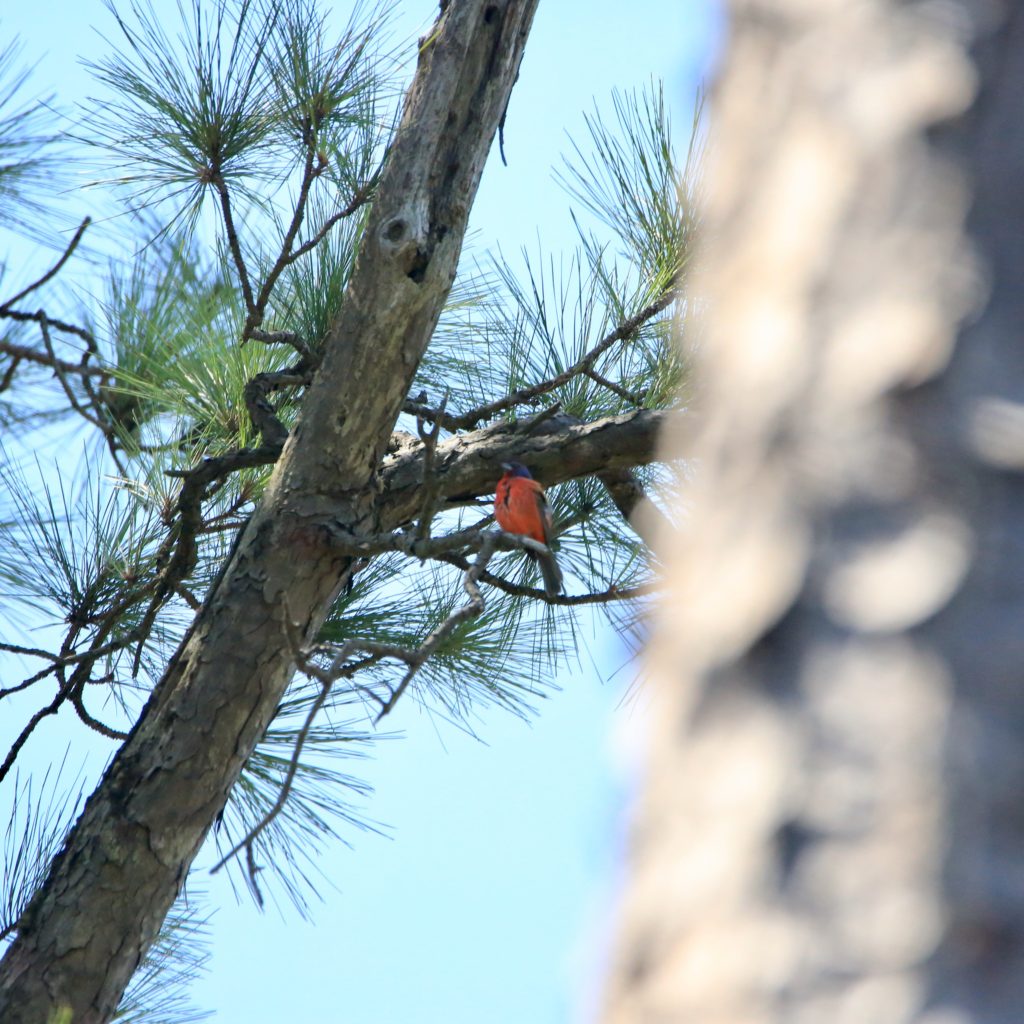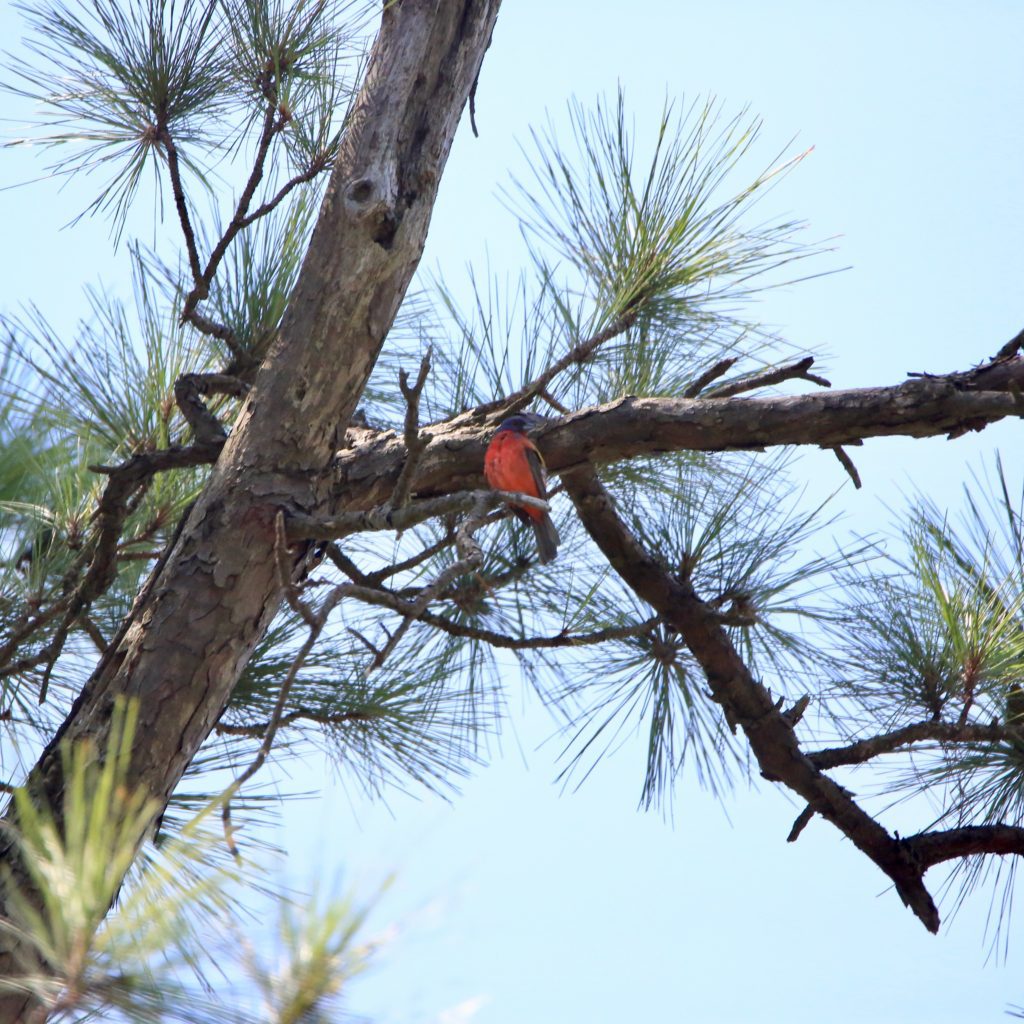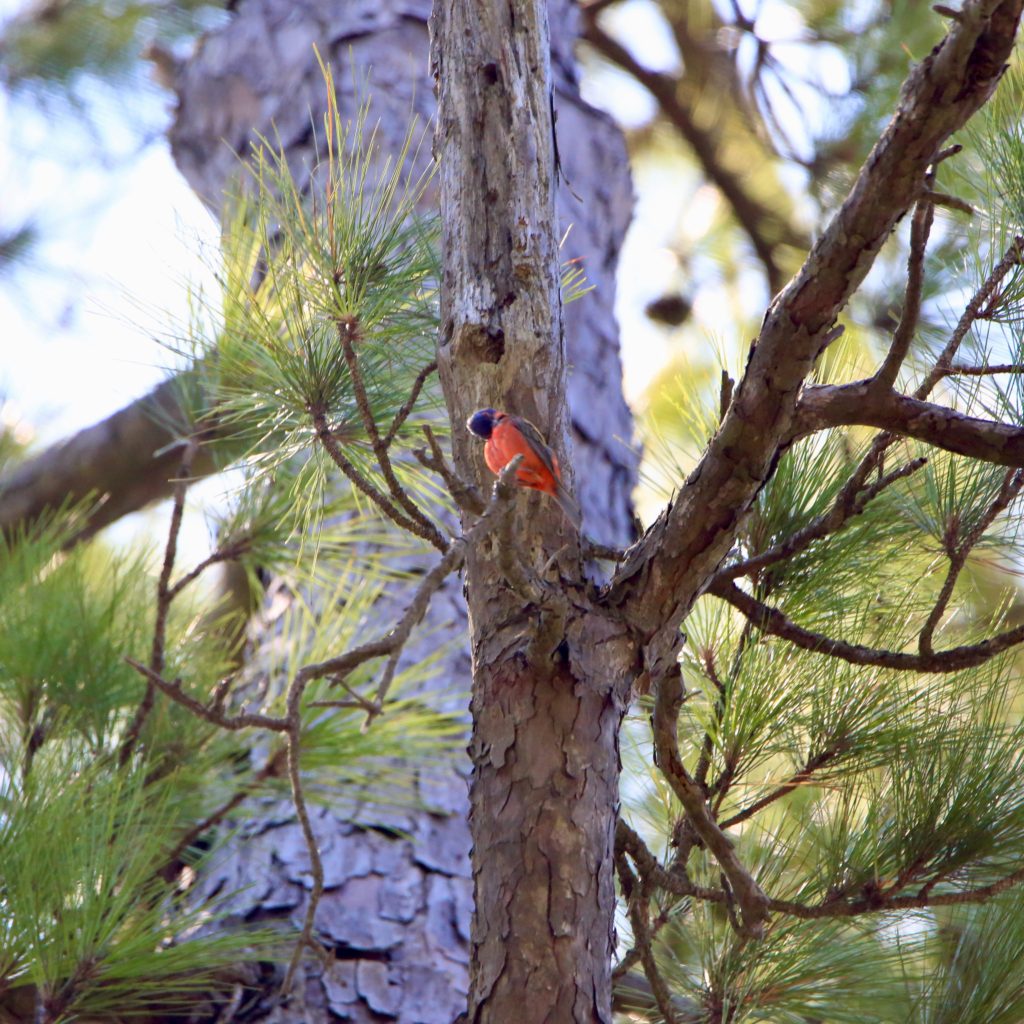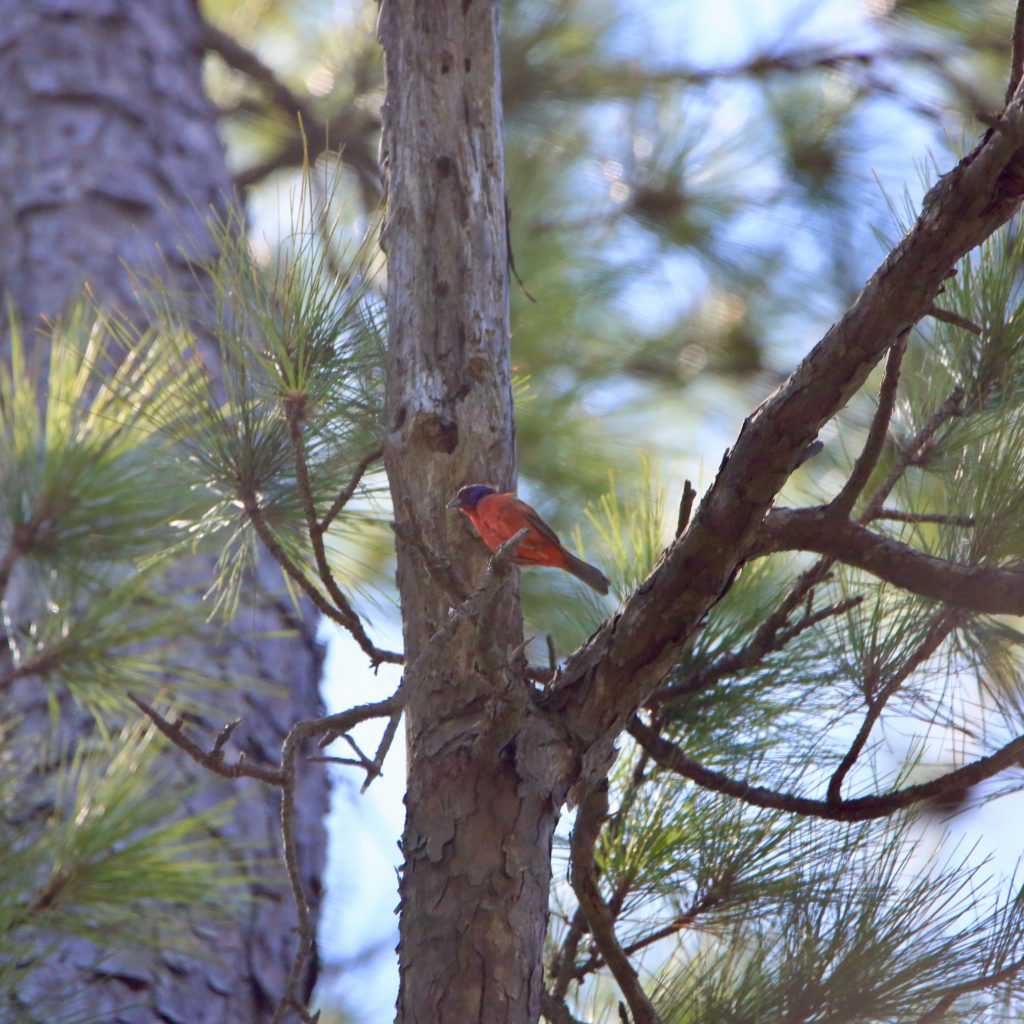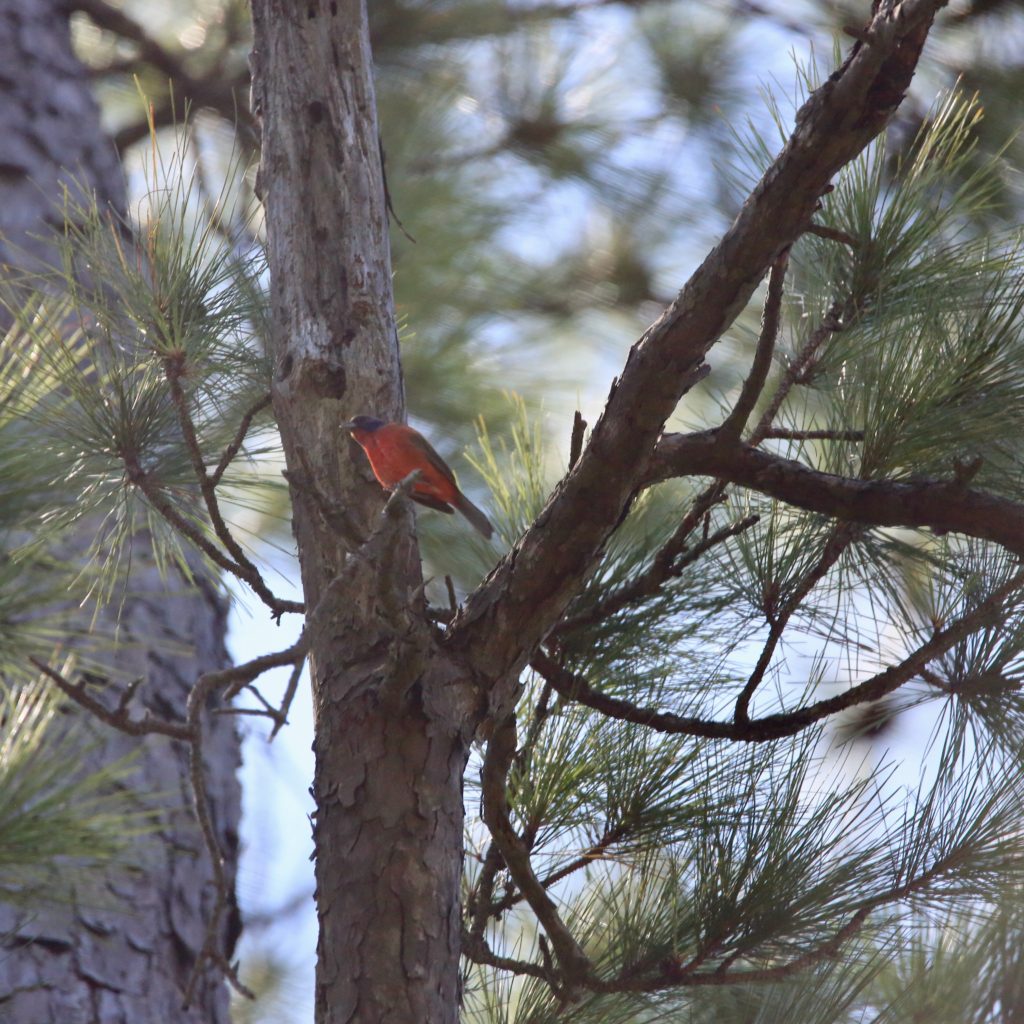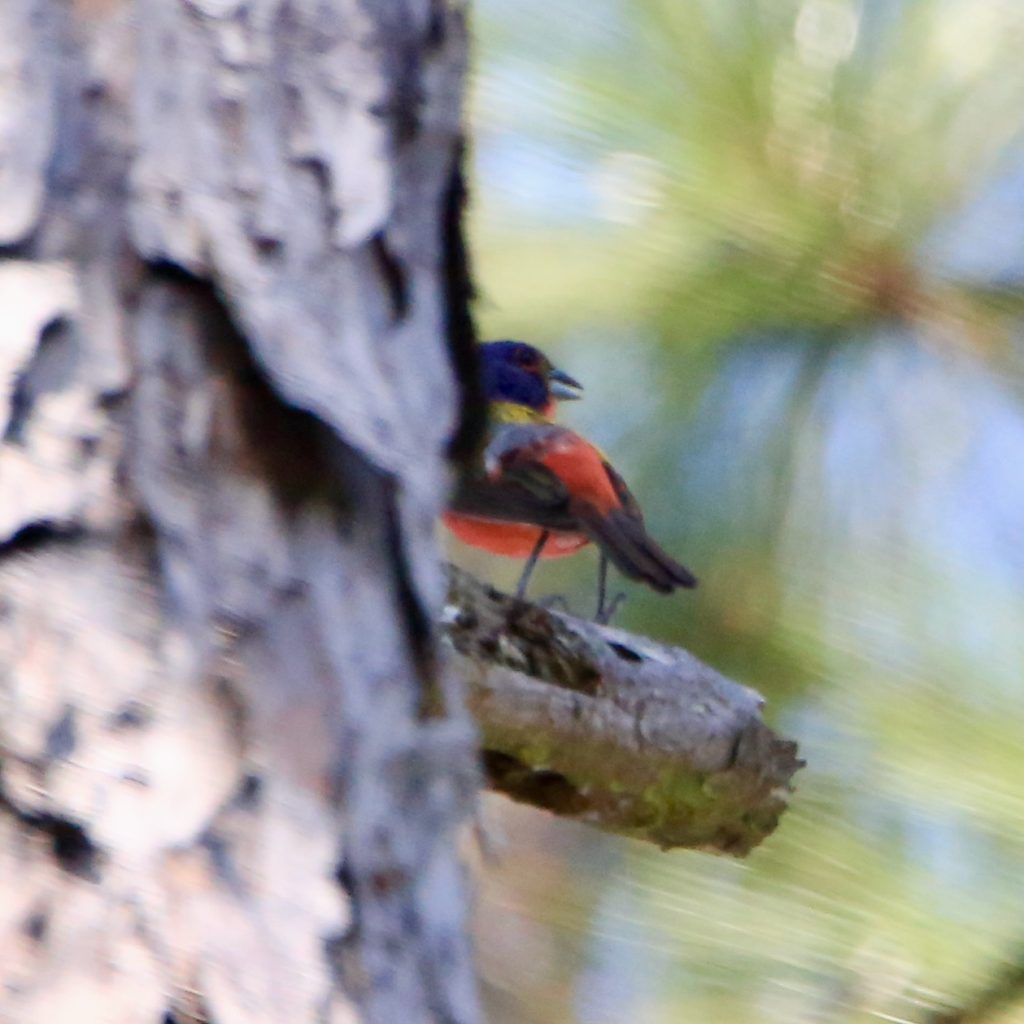
Painted Bunting
A Painted Bunting is a fun bird to see while bird watching. Below are some tips to help you identify Painted Buntings. We have also put together a list of fun Painted Bunting t-shirts, Painted Bunting bird patches, bird houses, bird feeders, binoculars, stickers and other fun bird watching items.
About Painted Buntings
Just like the Indigo Bunting, the Painted Bunting is a small bird belonging to the cardinal family and is native to North America. The bird also stands out for its bright multicolored feature in males. Their numbers are decreasing due to two main factors. Their nests are frequently parasitized by cowbirds and given their distinctive uniqueness, they get captured a lot to be caged as pets.
Description and Identification
These birds are medium-sized and finchlike. They have short round beaks adapted to picking seeds. Males have attractive colors like bright blue on their heads, bright red on the underparts, and lime green on their wings. The females, on the other hand, are uniformly colored, with bright-yellow green overall, and pale eyering. The juveniles look similar to the females but develop other colors as the males grow older. Owing to their dazzling plumage, the French call this bird nonpareil, which means “unequal”, referring to their amalgamation of bright colors. Males sing a sweet metallic chip call.
Painted Bunting Color Pattern
The male Painted Bunting fits its name as they seem to have flown out of a child’s coloring book. They have a vivid fusion of red, blue, yellow and green. The female and immature birds are bright green coupled with a pale eye ring.
Painted Bunting Size
Likewise, like the Indigo Bunting and other types of birds in the cardinal family, they are small birds with their length spanning 12-14cm long. They weigh about 13-19g and have a wingspan of 21-23cm.
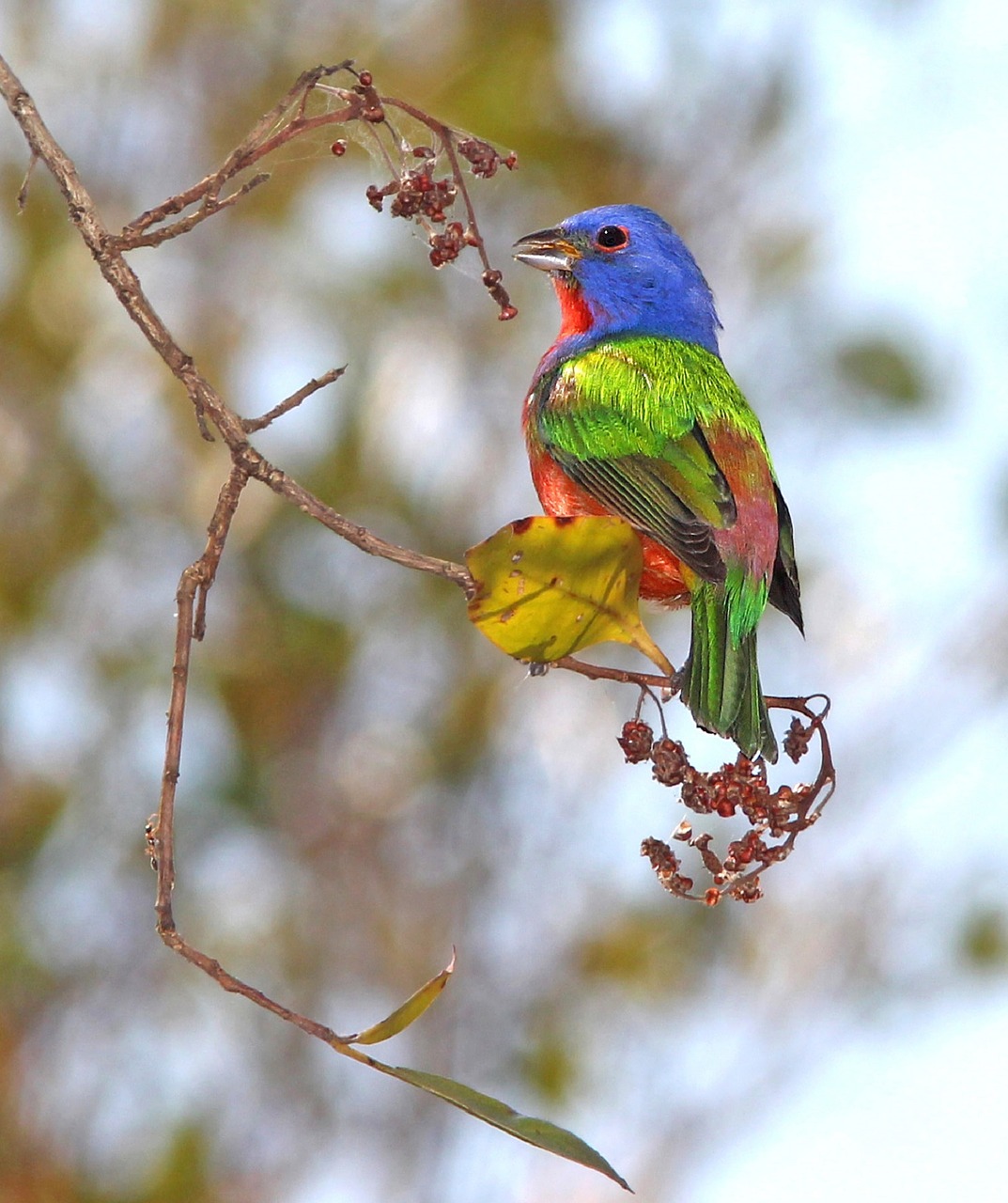
Painted Bunting Behavior
Although the Painted Bunting stands out, they are shy and like to be secretive. Bird watching has to be careful in order to catch a glimpse of its beauty. Males will be seen on exposed perches singing in spring to advertise their territory. The males would also fly bouncingly in different displays to emphasize their territory and attract females as well. Females rarely engage in any displays. After breeding, the birds migrate at night over short distances, a fact that emphasizes their secrecy.
What Painted Bunting Eat and Their Food
They forage on the ground in dense cover, amidst tall grass, looking for seeds. Painted Buntings eat large quantities of grass seeds. They also eat invertebrates like spiders, snails, grasshoppers, caterpillars, and other insects. Interestingly, Painted Buntings have been observed to eat insects caught in spider webs. They usually find food while hopping along the ground with a cautious eye.
During migration, they form loose flocks with birds of other species that eat the same seeds.
Painted Buntings like feeding on seeds and insects. Insects range from caterpillars, beetles, grasshoppers to flies. They primarily feed on seeds from grasses and weeds.
Where Painted Buntings Live and Their Habitat
Painted Buntings breed in dense areas adjacent too thick, grassy areas and woodlands edges in the coastal Southeast and South-Central US. During migration and the cold months, they rely on dense areas and the understory of semi-open forests. They can be sought out by placing bird feeders with plenty of seeds. They are more likely to visit a yard with low, dense vegetation. Due to their attractiveness, Painted Buntings are sold in huge numbers and kept in caged conditions. Their numbers are also decreasing in some areas due to human development activities.
They favor semi-open areas with dense low growth woody vegetation. These include woodland edges, roadsides, brush and town gardens. They breed around thickets or hedgerows before migrating.
Range and Migration
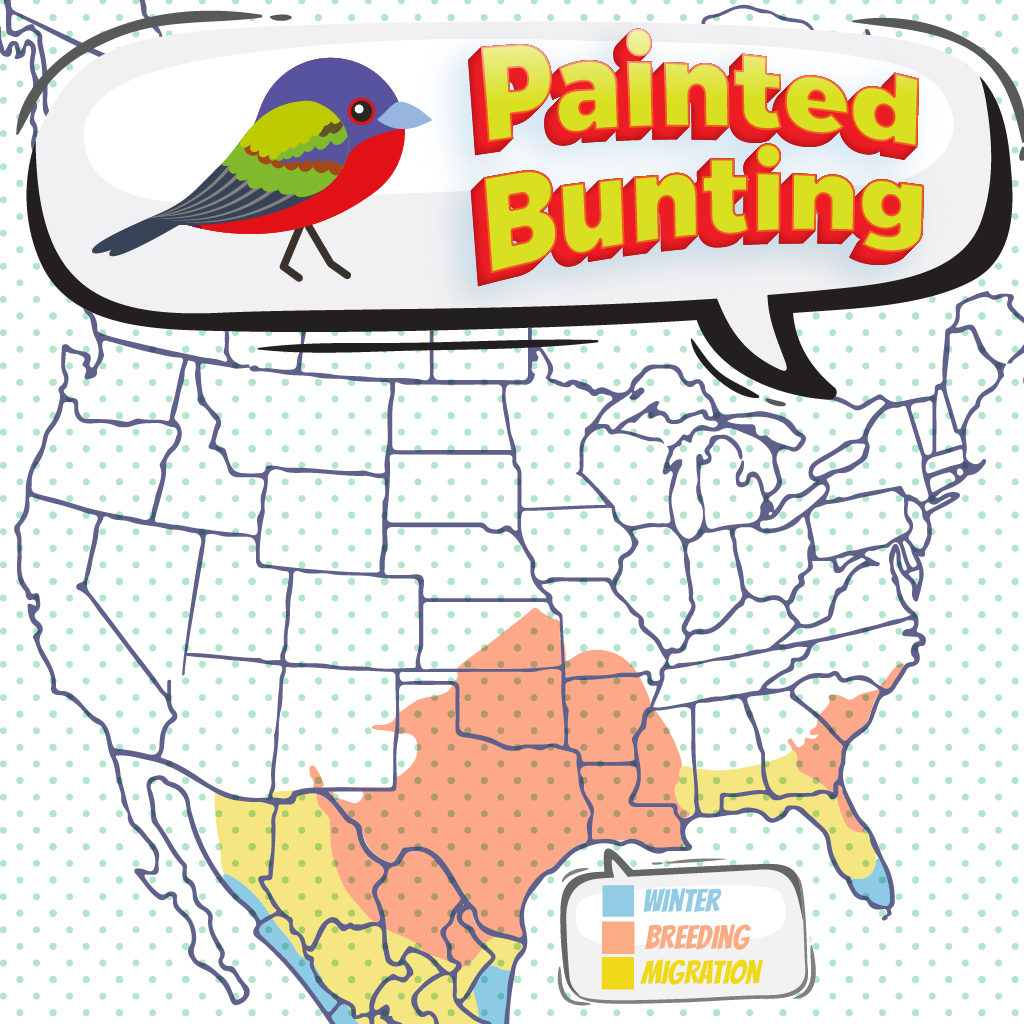
Geographically, Painted Buntings are divided over two separate locations. They have been classified into three types based on their breeding grounds: western, central, and eastern. Their breeding range persists in southern Arizona, southern Mexico, southern and eastern Texas, Oklahoma, Arkansas, Louisiana, northern Florida, coastal Georgia, and some parts of South Carolina and northern Mexico. For winters, they migrate to South Florida, Cuba, Bahamas, the coasts of Mexico, and Central America. An occasional vagrant is found in New York, Pennsylvania, and New Jersey. Interestingly, these birds molt before they migrate, which is rare among songbirds.
Nesting
While most of these birds are monogamous, some might also spend the breeding season alone. Other birds might also be seen in polygamous pairings. The breeding season starts in April and continues till August. The males arrive at their chosen location to check out and establish the territory a week before the females arrive. The nests are usually built by the females in low dense vegetation. The nest is supported and surrounded by the vegetation around it. During a year, a pair will lay up to two broods, as many younglings become prey for snakes.
Painted Bunting Lifecycle
Females can lay 3-4 eggs and sometimes get to 5. They incubate the eggs for 11-12 days before hatching. Hatchlings take 12-14 days to leave the nest and begin fending for themselves. Their life cycle goes up to 11 years.
Ornithology
Bird Watching Academy & Camp Subscription Boxes
At Bird Watching Academy & Camp we help kids, youth, and adults get excited and involved in bird watching. We have several monthly subscription boxes that you can subscribe to. Our monthly subscription boxes help kids, youth, and adults learn about birds, bird watching, and bird conservation.
Bird Watching Binoculars for Identifying Painted Buntings
The most common types of bird watching binoculars for viewing Painted Buntings are 8×21 binoculars and 10×42 binoculars. Bird Watching Academy & Camp sells really nice 8×21 binoculars and 10×42 binoculars. You can view and purchase them here.
Painted Bunting T-shirts
If you love the Painted Bunting you should purchase a Bird Watching Academy & Camp T-shirt. To help support bird conservation we donate 10 percent to bird conservation activities.
Painted Bunting Iron On Patches
Kids, Youth, and Adults love to collect our Bird Watching Academy & Camp iron on patches. Our bird watching patches help you keep track of the birds you have seen an identified. You can also display the patches on our Bird Watching Academy & Camp banners.
The Painted Bunting is a great iron on patch to start your collection with. The patches are durable and can be sewn on or ironed on to just about anything.
Painted Bunting Stickers
Stickers are a great way for you to display your love for bird watching and the Painted Bunting. We sell a monthly subscription sticker pack. The sticker packs have 12 bird stickers. These sticker packs will help your kids learn new birds every month.
Bird Feeders For Painted Bunting
There are many types of bird feeders. Here are our favorite bird feeders for your backyard. We use all of these bird feeders currently. Kids will have a great time watching birds eat at these bird feeders. Using this collection of bird feeders will provide a wide variety and many types of birds.
Best Bird Houses for Painted Bunting
There are many types of bird houses. Building a bird house is always fun but can be frustrating. These 4 bird houses have become our favorites. Getting a bird house for kids to watch birds grow is always fun. We spent a little extra money on these bird houses but they have been worth the higher price and look great.


